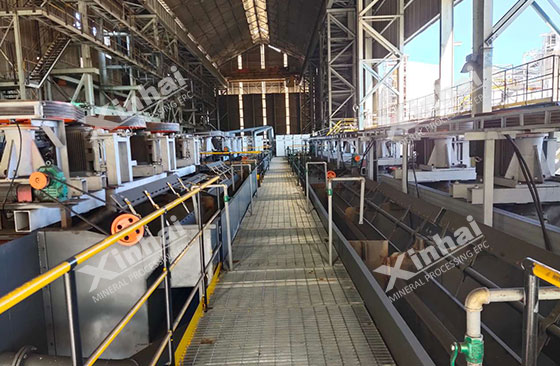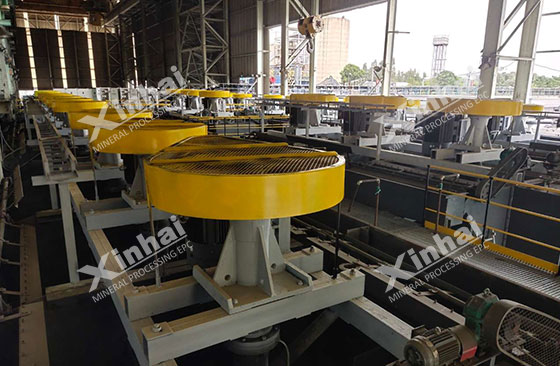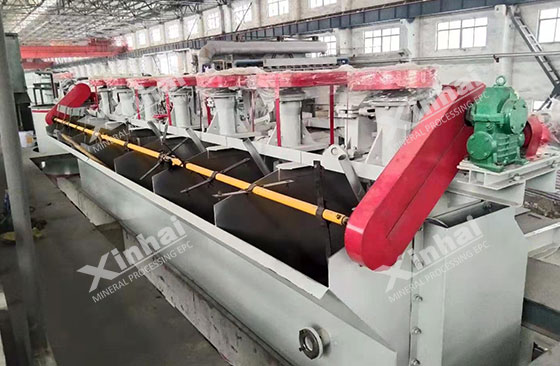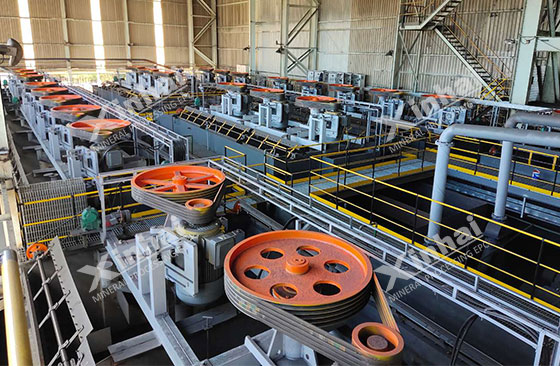As an important industrial mineral raw material, quartz sand is widely used in glass, ceramics, metallurgy, chemical industry and other fields. In the quartz sand beneficiation process, flotation is one of the commonly used sorting methods. In the flotation process, reverse flotation is a common technology used to remove impurities in quartz sand to improve the purity of the product. In the reverse flotation process, its effect is affected by many factors. This article will discuss in detail the influence of factors such as pulp pH value, particle size, pulp concentration, collector dosage and pulp temperature on the quartz sand reverse flotation process.
Use the table of contents below to navigate through the guide:
01Effect of slurry pH on quartz sand reverse flotation
The pH of the slurry determines the charge state of the mineral surface and the chemical balance in the solution, which affects the adsorption of the collector and the floatability of the mineral. In the process of quartz sand reverse flotation, it is usually necessary to control the pH of the slurry to achieve the best flotation effect.

The quartz surface in acidic conditions is positively charged, while most silicate minerals have negative charges on the surface under neutral to alkaline conditions. Therefore, under acidic conditions, the quartz surface is easy to adsorb anionic collectors, improving its floatability. However, acidic conditions may cause the flotation of other impurity minerals, thus affecting the separation effect.
The surface of quartz under alkaline conditions is negatively charged, and cationic collectors are more likely to adsorb on its surface, improving the floatability of quartz. By adjusting the pH value of the slurry, the adsorption effect of the collector can be optimized, impurities in the quartz sand can be selectively floated, and the purity of the final product can be improved.
02Effect of mineral particle size on quartz reverse flotation
The particle size distribution of mineral particles directly affects the contact area between bubbles and mineral particles and the flotation dynamics during the flotation process. Generally speaking, fine-grained mineral particles have a larger specific surface area, which can provide more adsorption sites and improve the utilization efficiency of collectors.
In actual production, the particle size of quartz sand needs to be controlled within a certain range through screening and grinding to ensure good flotation effect. Because too coarse particles are not easy to float, and too fine particles are easy to muddy, affecting the flotation efficiency.

03Effect of slurry concentration on quartz reverse flotation
Slurry concentration refers to the content of solid particles in the slurry, which is an important parameter to be considered in the flotation process. Slurry concentration directly affects the rheological properties of the slurry, the distribution of the collector, and the collision and binding of mineral particles.
Under high-concentration slurry conditions, the collision and binding between mineral particles increase, and it is easy to form particle aggregation, resulting in a decrease in flotation effect. In addition, high-concentration slurry may also lead to insufficient collector concentration, affecting the adsorption effect of the collector. Therefore, in actual production, the slurry concentration is usually adjusted to control it within an appropriate range to ensure a good flotation effect.
04Effect of collector dosage on quartz reverse flotation
Collector is an essential reagent in the flotation process, and its dosage directly affects the flotation effect. The function of the collector is to change the hydrophilicity of the mineral surface to make it hydrophobic, so that it can attach to the bubbles to achieve flotation. In the process of quartz sand reverse flotation, it is necessary to determine the optimal collector dosage through experiments to achieve the best flotation effect.

If the amount of collector is too small, it will not be able to fully change the hydrophilicity of the mineral surface, resulting in poor flotation effect. If the amount of collector is too large, it will not only increase the cost of the reagent, but also may cause the flotation of other impurity minerals, affecting the separation effect.
05Effect of temperature on quartz reverse flotation
The slurry temperature affects the physical and chemical properties of the mineral surface, the adsorption rate and solubility of the collector, and the generation and stability of bubbles. Within a certain range, appropriately increasing the slurry temperature can increase the adsorption rate of the collector and the floatability of the mineral.
In actual production, the flotation effect can be optimized by controlling the temperature of the slurry. However, too high a temperature may cause the collector to decompose or fail, affecting the flotation effect. Therefore, it is necessary to select a suitable temperature range according to the specific situation to ensure the best flotation effect.

The above content is the influence of various factors such as pulp pH value, particle size, pulp concentration, collector dosage and pulp temperature in the quartz sand reverse flotation process. In actual production, it is necessary to comprehensively consider these factors according to specific conditions and determine the best process parameters through experiments to improve flotation effect and product quality. Continuous research and optimization of these factors can improve the efficiency of quartz sand reverse flotation, reduce production costs and increase the economic benefits of enterprises.


 marketing@ytxinhai.com
marketing@ytxinhai.com  0086 13810327080
0086 13810327080 






































































































 CHAT
CHAT MESSAGE
MESSAGE






